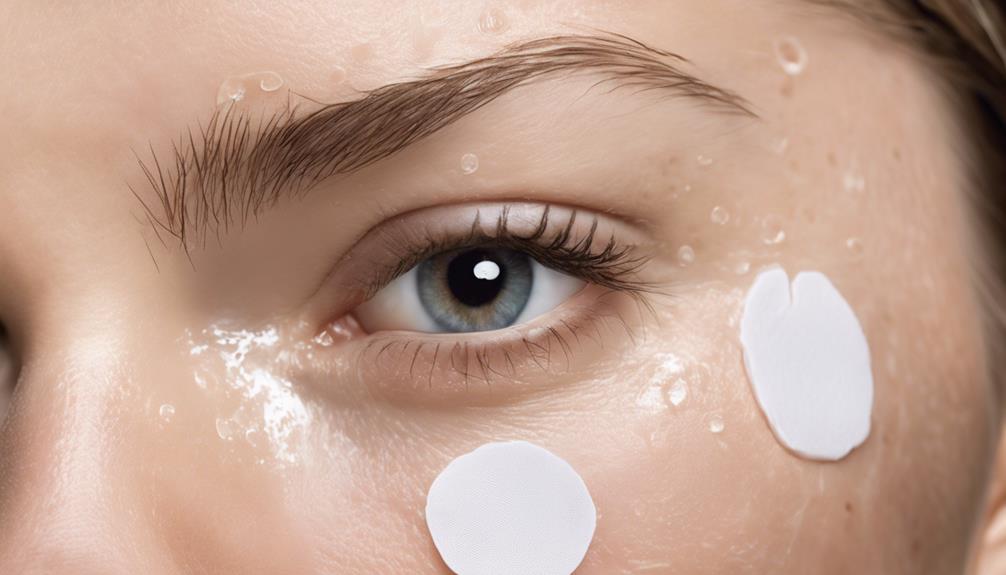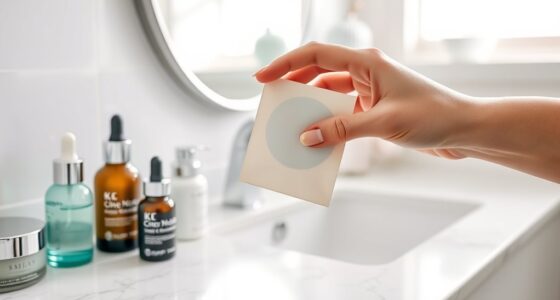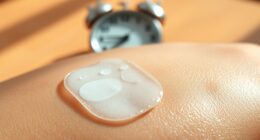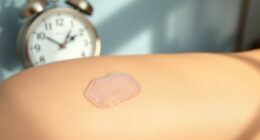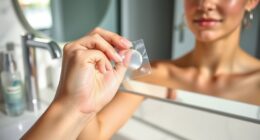You should keep a pimple patch on for about 4 to 8 hours for effective results. If you’re using it overnight, you can leave it on for 8 to 12 hours. For persistent pimples, some patches can be worn for up to 24 hours. Remember to remove it when it turns opaque or white, as that indicates saturation. Want to know more about how to optimize your pimple patch experience? There’s plenty more to discover!
Key Takeaways
- Recommended wear time for pimple patches is about 4 to 8 hours for optimal effectiveness.
- Overnight use can extend patch application to 8 to 12 hours for enhanced healing.
- For persistent pimples, patches can be left on for up to 24 hours.
- Remove patches when they turn opaque or white, indicating saturation and reduced effectiveness.
- Always ensure clean skin and hands before application to maximize adhesion and efficacy.
Understanding Different Types of Pimple Patches
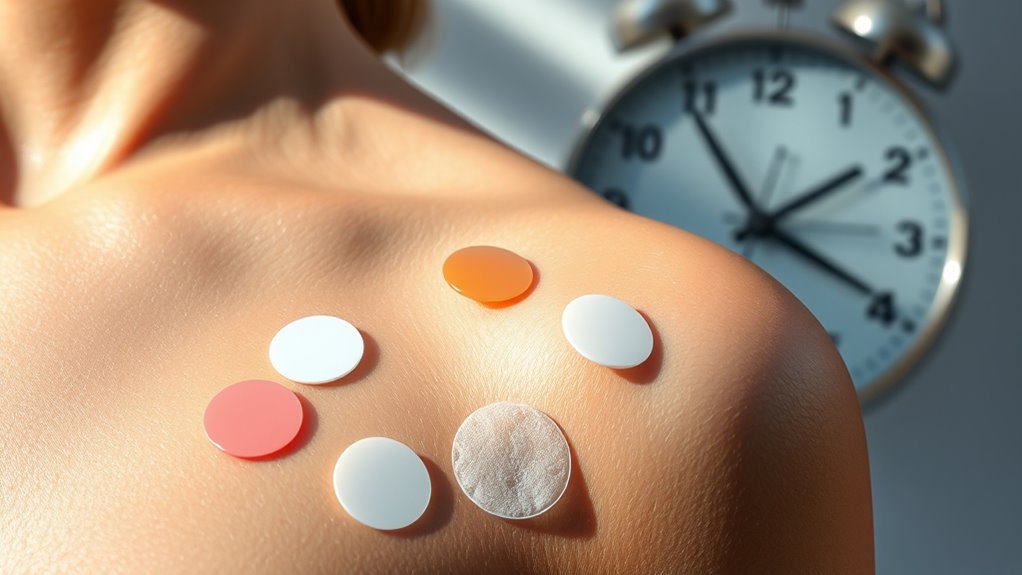
When it comes to treating breakouts, various types of pimple patches offer unique benefits tailored to your skin’s needs.
Hydrocolloid patches are great for absorbing excess oil and pus, creating a moist environment that promotes healing. If you’re dealing with inflammation, medicated patches containing salicylic acid or benzoyl peroxide can effectively reduce bacteria and redness. Pimple patches are particularly popular due to their convenience and effectiveness in addressing various acne issues.
Hydrocolloid patches absorb oil and pus, while medicated options tackle inflammation and bacteria for clearer skin.
For cystic acne, microneedle patches penetrate deeper to deliver active ingredients right where you need them. Non-medicated patches work well for surface-level pimples, while translucent patches provide a discreet option for daytime wear. No matter your skin type, there’s a patch designed to help you tackle your specific breakout challenges effectively.
Ideal Duration for Pimple Patch Application

To get the most out of your pimple patch, aim to wear it for about 4 to 8 hours. This duration allows the patch to effectively absorb impurities and reduce inflammation. Additionally, the hydrocolloid technology used in pimple patches helps to create a protective barrier over blemishes, enhancing their efficacy.
Overnight use is common, lasting around 8 to 12 hours, which enhances the healing process as your skin repairs itself while you sleep. For persistent pimples, you can leave the patch on for up to 24 hours.
Keep an eye on the patch; once it turns opaque or white, it’s time to remove it, as it indicates saturation. Prolonged wear not only aids in healing but also protects against irritants and prevents the temptation to pick at your skin. Always check the patch for peeling or weakening adhesive.
Factors Affecting Patch Duration

Several factors can influence how long you should keep a pimple patch on to achieve the best results.
First, consider your skin sensitivity; patches with active ingredients like salicylic acid may need shorter wear times to prevent irritation. The formulation matters too—those with tea tree oil or niacinamide might have specific use guidelines. Additionally, standard hydrocolloid patches are optimal for maximum absorption of impurities when worn for the full recommended duration.
Make certain the patch adheres well; proper fit enhances effectiveness. If you’re using it during the day, environmental factors can impact absorption, while overnight use aligns with your skin’s healing.
Finally, replace the patch when it turns white or loses adhesion, as this indicates it’s maximized its absorption potential.
Following these tips will help you get the most out of your pimple patch.
Effectiveness Based on Acne Types
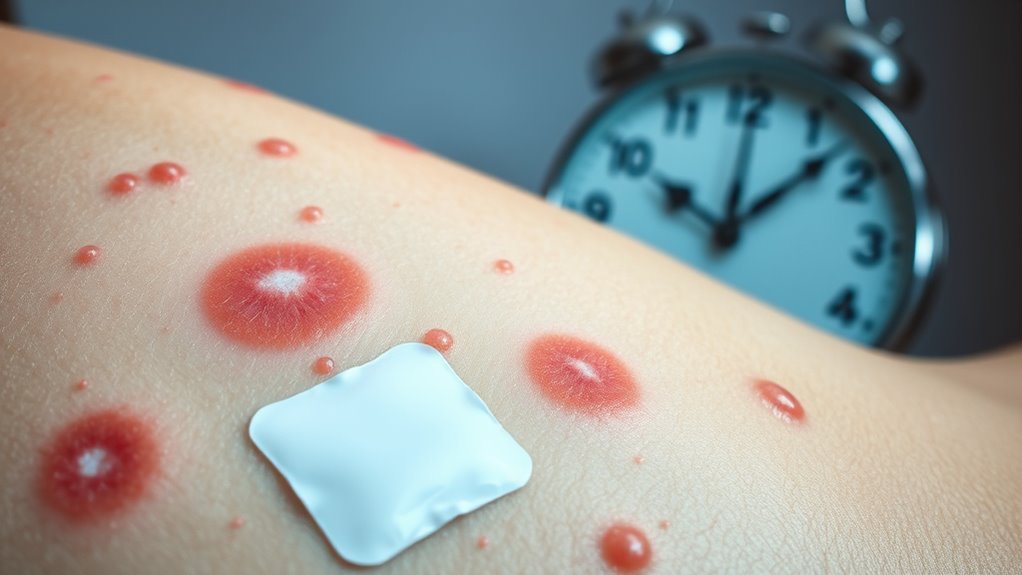
Understanding how effective pimple patches are depends largely on the type of acne you’re dealing with.
For whiteheads and pustules, these patches work wonders by absorbing fluid and pus, reducing inflammation quickly. If you’re facing mild breakouts, patches can help keep things under control. Additionally, they absorb impurities using hydrocolloid material, which enhances their effectiveness on these types of acne.
However, they’re less effective for blackheads since they don’t tackle oxidized oil. Cystic acne presents a challenge too, as patches mainly target surface-level issues and won’t considerably reduce cyst size.
For the best results, apply patches early on, especially for small, newly formed pimples.
Benefits Beyond Acne Treatment
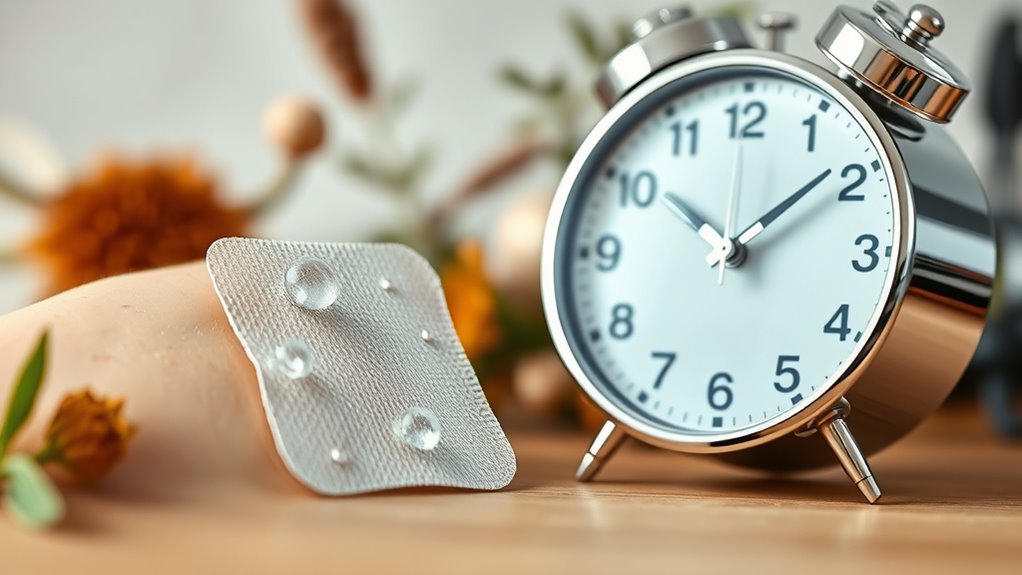
These patches act as a barrier, preventing irritation from external factors and promoting faster healing. By keeping your hands off the blemishes, they also help reduce scarring, making your skin look better over time. Additionally, they are designed to absorb fluid from the pimple, which further aids in the healing process. Pimple patches can be particularly effective for cystic acne treatment, as they absorb impurities and reduce inflammation.
Pimple patches create a protective barrier, accelerate healing, and minimize scarring for healthier-looking skin.
Incorporating pimple patches into your routine enhances your skincare regimen, providing targeted, non-invasive treatment. Plus, their convenience and discreet nature mean you can wear them anytime, whether you’re at home or out.
Enjoy the boost in confidence as they reduce visibility and offer quick results, all while fitting seamlessly into your daily life.
Considerations for Sensitive Skin
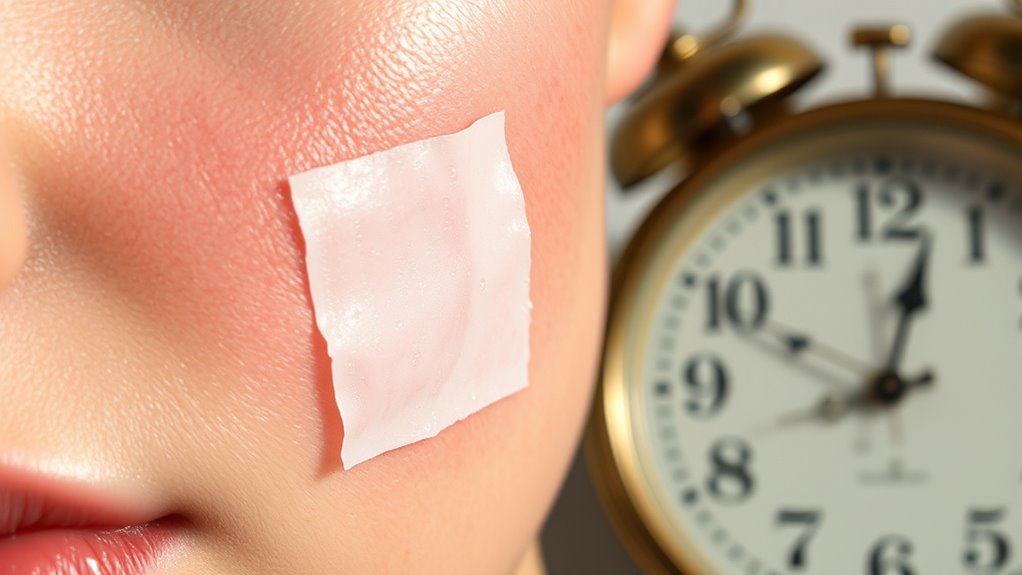
If you have sensitive skin, choosing the right pimple patch and knowing how long to keep it on are essential for preventing irritation.
Opt for hydrocolloid patches, as they’re generally gentler, but remember that shorter wear times may be necessary. If the patch contains active ingredients like salicylic acid, keep an eye on the clock to avoid irritation. Hydrocolloid patches are designed to absorb excess fluid, making them effective for treating pimples.
Always start with clean, dry skin before applying the patch, and regularly check it for saturation or peeling. If you notice increased redness, itching, or any discomfort, remove the patch immediately.
Potential Drawbacks of Pimple Patches
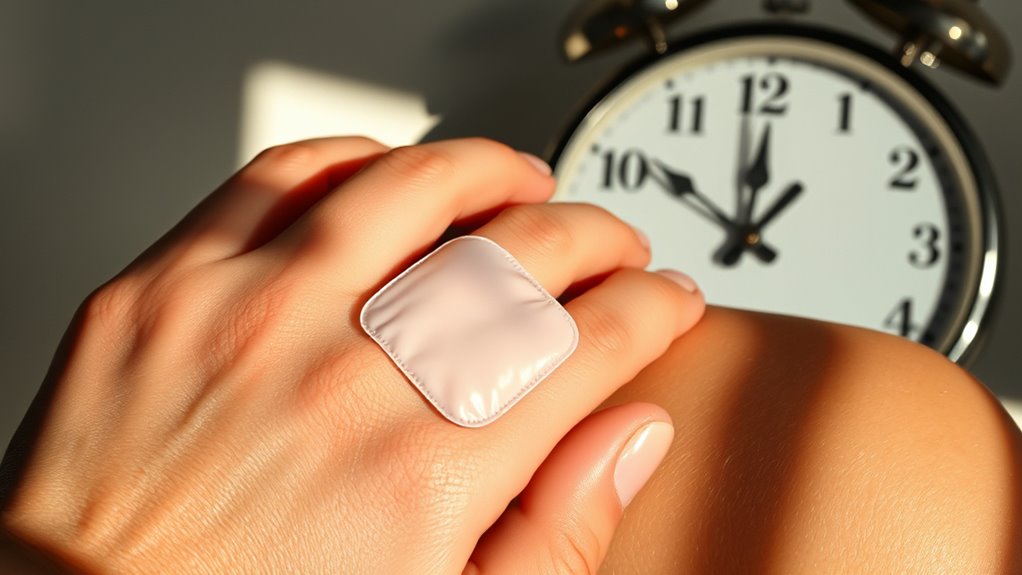
Many people find pimple patches convenient for quick acne relief, but they come with some notable drawbacks.
While they work well on open, draining pimples, they aren’t effective against deep-rooted acne or closed lesions. Patches only treat surface-level issues, leaving underlying causes like clogged pores unaddressed. They also don’t prevent new breakouts, meaning the problem can persist. Additionally, pimple patches can be pricier than traditional treatments and contribute to waste due to their packaging. The adhesives may irritate sensitive skin, causing allergic reactions for some users. Furthermore, pimple patches are generally unhelpful for individuals with closed lesions or deeper lesions.
If you’re dealing with severe acne, professional treatments might be a more effective option than relying solely on these quick fixes.
Tips for Optimal Patch Use
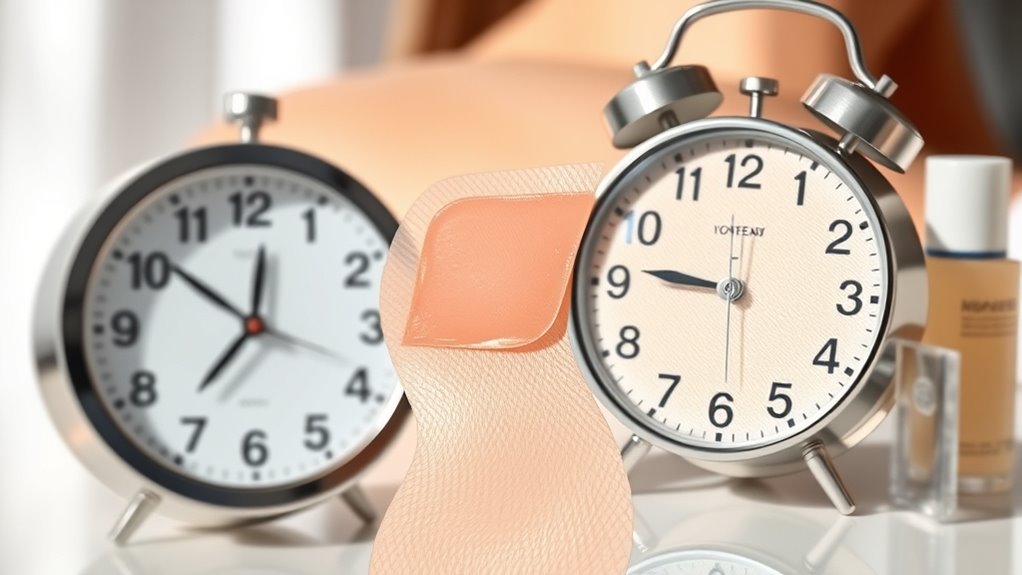
To get the most out of your pimple patches, start by properly preparing your skin and choosing the right patch for your acne type.
Cleanse your face with a gentle, oil-free cleanser and pat it dry—this guarantees better adhesion. Select a hydrocolloid patch for surface pimples or a medicated patch for inflammation. Pimple patches are designed for targeted treatment of breakouts, making them an effective option for occasional acne. Additionally, using a patch can help protect the area from sun exposure that may worsen inflammation.
Place the patch directly over the pimple, fully covering it. For best results, leave the patch on overnight, but don’t exceed 24 hours. Replace it if it turns opaque or loses adhesion.
Remember to wash your hands before application to maintain hygiene.
Avoid common mistakes like using the wrong patch or applying it to dirty skin, as these can hinder your results.
Frequently Asked Questions
Can I Use Multiple Patches on Different Pimples Simultaneously?
Absolutely, you can use multiple pimple patches on different pimples at the same time!
This strategy helps tackle several breakouts effectively, allowing each patch to absorb impurities while reducing inflammation across multiple areas.
Just make sure to apply them to clean, dry skin for the best results.
With this approach, you’ll speed up healing and minimize the chances of scarring, all while keeping your skincare routine seamless and effective.
What Should I Do if the Patch Falls Off?
If your pimple patch falls off, don’t panic.
First, clean and dry the area to guarantee better adhesion for reapplication. Remove any leftover adhesive or skincare products that could interfere.
Choose a suitable time, like after your skincare routine, and gently press the patch onto the blemish.
If it keeps falling off, consider trying a different type or material of patch for better compatibility with your skin.
How Do I Know if the Patch Is Working?
You’ll feel like a dermatologist as you observe your pimple patch working its magic!
Look for signs like color changes or a decrease in redness. If the patch turns opaque or white, it’s soaking up all the nastiness.
Notice how the pimple shrinks, and the irritation fades. If it’s creating a cozy, moist environment, you know it’s doing its job.
Just make sure to avoid picking; let the patch do its thing!
Can I Use Pimple Patches on Popped Pimples?
Yes, you can use pimple patches on popped pimples!
These patches provide a protective barrier, helping to prevent infection and reduce inflammation. They also absorb excess fluids, speeding up the healing process.
Just make sure you apply them to clean, dry skin to avoid introducing bacteria. Remember, if the patch becomes saturated, replace it to maintain effectiveness.
They’re a great tool to deter you from touching or picking at your skin!
Are Pimple Patches Safe for All Skin Types?
Pimple patches aren’t safe for everyone.
While they work well for some acne types, sensitive skin might react negatively, leading to irritation or dryness. You should also consider potential allergic reactions to the adhesive or ingredients.
To reduce risks, test the patch on a small area first and guarantee your skin is clean and dry before application.
If you notice any irritation, remove the patch and consult a dermatologist for advice.
Conclusion
To sum up, knowing how long to keep a pimple patch on can really make a difference in your skincare routine. Most patches work best when left on for 6-8 hours, but they can be effective for up to 24 hours. Did you know that studies show around 85% of people experience acne at some point in their lives? So, you’re not alone in your battle! With the right approach, pimple patches can be a game changer for clearer skin.



